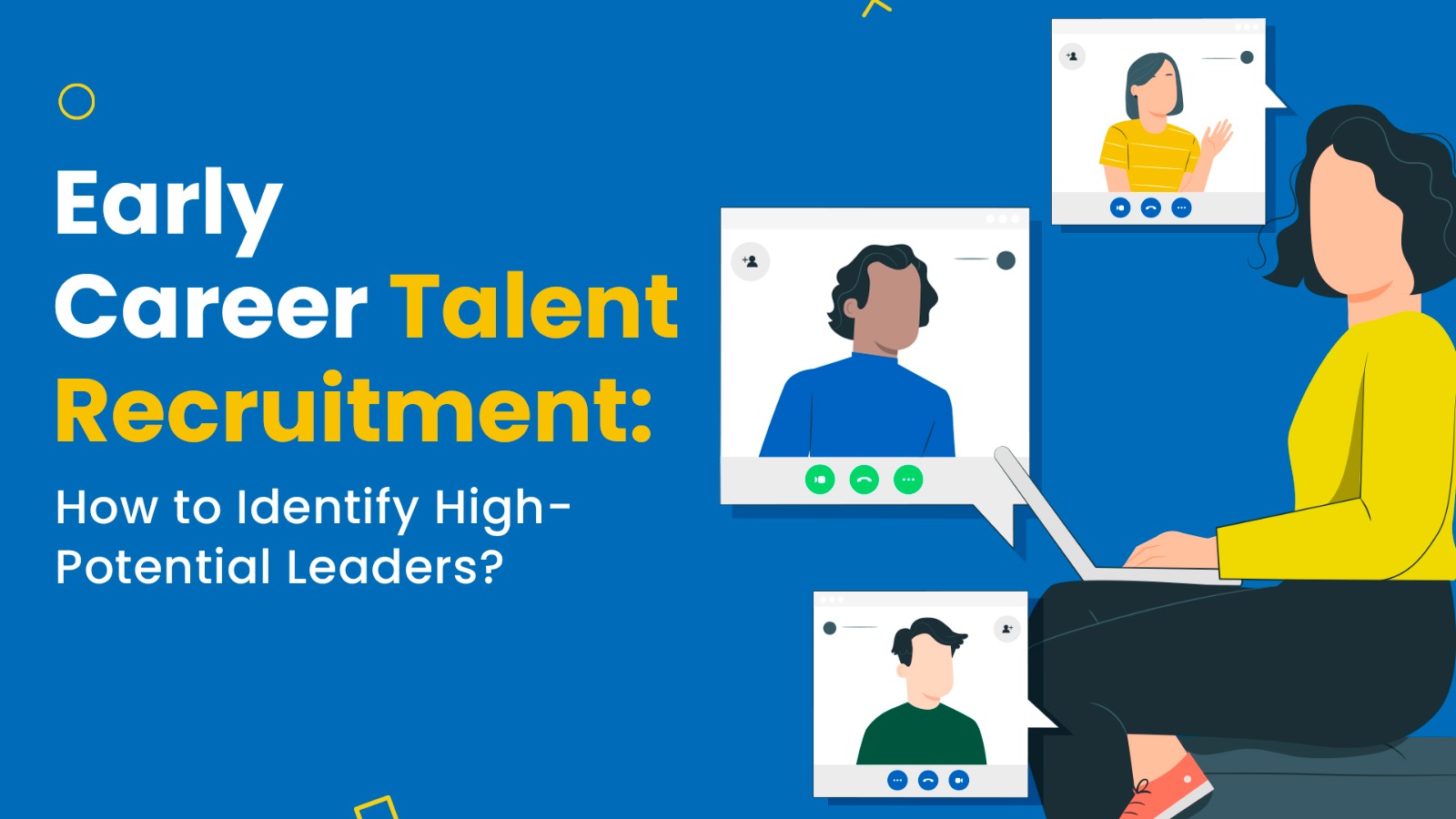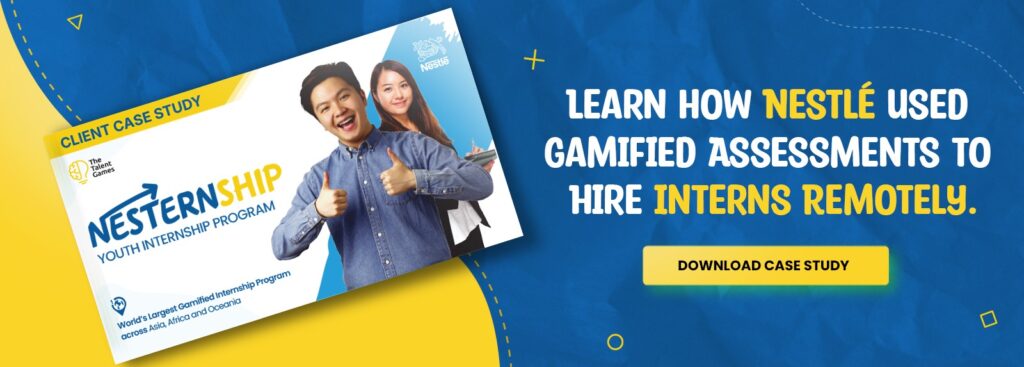How can you gain a competitive edge in today’s talent crisis? The answer lies in strong leadership—but identifying future leaders during hiring, especially through early-career talent recruitment, is a challenge.
Many candidates shine in interviews or technical tests, yet their leadership potential often goes unnoticed, costing businesses the opportunity to nurture tomorrow’s leaders.
So, how can you assess these qualities effectively? A method that not only reveals hidden leadership traits but also predicts how candidates perform in high-pressure situations is essential.
In this blog, we’ll explore the best practices—like gamified assessments—that can help you identify and develop leadership talent early, ensuring your organization stays ahead in the evolving job market.
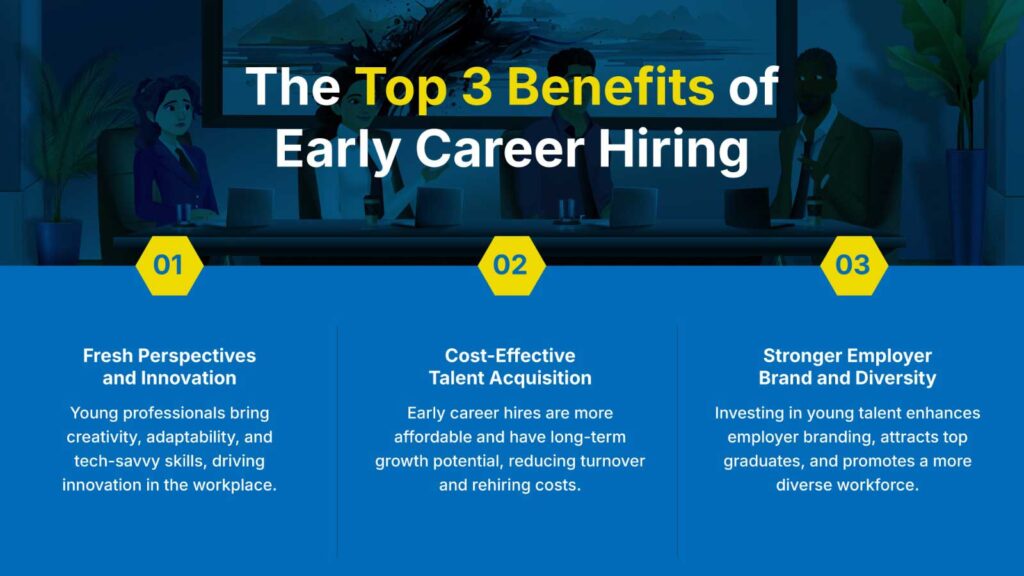
Best Practices for Early-Career Talent Hiring
Hiring early-career talent requires a mix of strategy, innovation, and empathy. Here’s how to get it right:
1. Focus on Potential, Not Just Experience
Early-career candidates may not have extensive work histories, but they bring fresh perspectives and untapped potential. Look for transferable skills like teamwork, problem-solving, and adaptability.
2. Use Competency-Based Assessments
Move beyond resumes and interviews. Use tools like gamified Situational Judgement Tests to assess how candidates handle real-world challenges.
3. Prioritize Candidate Experience
A positive hiring experience can set you apart. Gamified assessments make the process engaging and memorable, leaving candidates with a great impression of your brand.
4. Reduce Bias with Data-Driven Tools
Traditional methods often favor candidates who interview well but may not perform as expected. Gamified assessments provide objective data to level the playing field.
5. Showcase Your Company Culture
Early-career candidates want to work for companies that align with their values. Use your hiring process to highlight your culture and mission.
Why Early-Career Hiring is a Goldmine for Future Leaders
Early-career candidates are like uncut diamonds like raw, full of potential, and waiting to shine. But traditional hiring methods often fail to assess their true capabilities.
Resumes and interviews can only tell you so much. They don’t reveal how a candidate thinks, solves problems, or handles pressure. That’s where competency-based hiring comes in.
By focusing on key competencies like decision-making, emotional intelligence, and adaptability, you can identify candidates who have what it takes to grow into leadership roles.
What Competencies Do Future Leaders Need?
The leaders are not leaders only because of their knowledge but also due to a few important set of competencies. Gamified SJTs don’t just test knowledge; they assess leadership-driven competencies such as:
1. Decision-Making Under Pressure
Great leaders make calculated decisions even in uncertain situations. Gamified SJTs place candidates in high-stakes workplace scenarios, testing their ability to analyze and act swiftly.
2. Adaptability & Learning Agility
The business landscape evolves fast. Future leaders must be quick learners who embrace change. Game-based assessments simulate dynamic environments to see how candidates adjust and innovate.
3. Problem-Solving & Critical Thinking
A leader’s value is in solving problems, not just identifying them. Gamified SJTs present real-world challenges, measuring how effectively candidates find solutions.
4. Emotional Intelligence & Teamwork
Leadership isn’t a solo act. Candidates must navigate team dynamics, resolve conflicts, and communicate effectively. Game-based scenarios test their ability to lead with empathy.
5. Initiative & Ownership
The best leaders don’t wait for instructions—they take charge. Gamified assessments measure proactive behavior, spotting candidates who think beyond the task at hand.
Gamified assessments by The Talent Games offer over 20 key competency assessments for identifying leadership in candidates through engaging situational judgement tests.
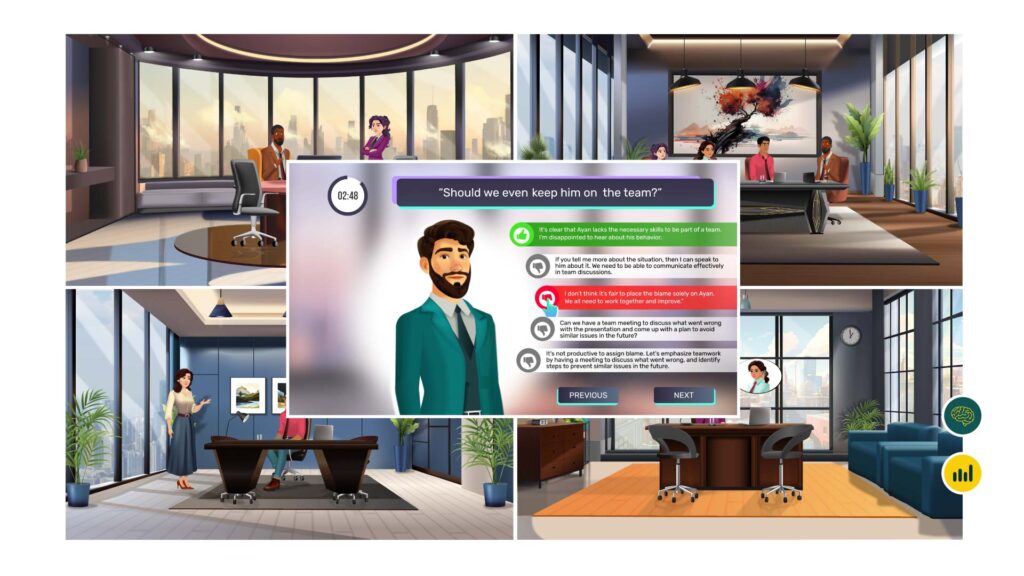
The Problem with Traditional Situational Judgement Tests
Traditional SJTs have been around for decades, but let’s face it—they’re outdated.
Candidates often find them repetitive, boring, and disconnected from real-world scenarios. Worse, they can be biased, favoring those who are good at “gaming” the system rather than demonstrating true potential.
In a world where engagement and candidate experience matter more than ever, traditional SJTs just don’t cut it.
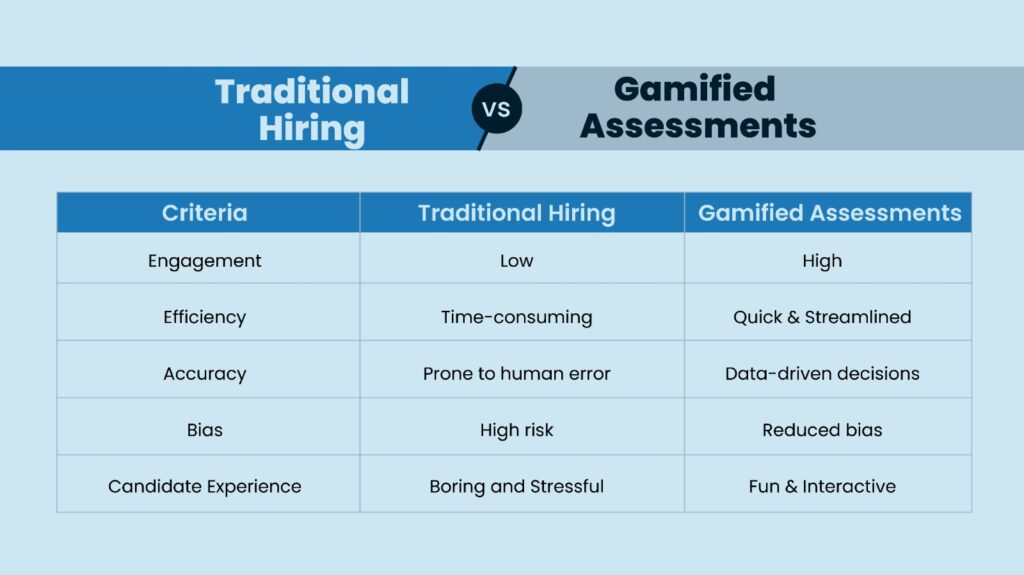
Why to Gamify your Early Career Talent Recruitment
With the rising competition for top talent, employer branding has become more important than ever. Companies need innovative hiring methods to attract and engage candidates—especially early-career talent from Gen Z, a generation deeply connected to gamification.
This is where gamified recruitment stands out as a powerful tool to make hiring more engaging, data-driven, and predictive.
By incorporating interactive, game-based evaluations, you can:
- Improve candidate engagement:
- Identify real potential:
- Ensure fair and unbiased hiring:
- Strengthen your employer brand
Leading companies like Nestlé, Unilever, Bupa, and HBL are already leveraging gamified hiring to attract and discover high-potential future leaders.
How Gamification Assess Early Career Leadership Competencies
Gamified SJTs are designed to measure what really matters.
For example, a candidate might be placed in a virtual scenario where they have to resolve a team conflict or prioritize tasks under tight deadlines. These scenarios assess:
- The ability to motivate others by inspiring and energizing their team.
- The ability to set directions by providing a clear vision and strategy for success.
- The ability to delegate tasks effectively while trusting and empowering team members.
- The ability to coach and mentor by guiding others to improve their skills and performance.
- The ability to recognize and appreciate team contributions to boost morale.
- The ability to develop people by investing in their growth and professional advancement.
- The ability to drive team engagement by fostering collaboration and a positive work culture.
- The ability to empower others by giving them autonomy and confidence to take initiative
The best part? The results are data-driven, giving recruiters a clear picture of each candidate’s strengths and weaknesses.
Why Competency-Based Hiring is Essential
Companies are shifting their focus to competency assessments because skills alone don’t guarantee success—real impact comes from how individuals think, adapt, and lead.
Competent leaders drive innovation, foster resilience, and make strategic decisions that strengthen the bottom line.
By identifying candidates with problem-solving abilities, emotional intelligence, and leadership instincts, organizations ensure they hire professionals who don’t just fill roles but fuel long-term growth.
How Gamified SJTs Help Recruiters
Recruiters often struggle to sift through hundreds of applications to find the right fit.
Gamified SJTs simplify this process by:
- Ranking candidates: Automatically scoring candidates based on their performance.
- Reducing bias: Focusing on skills and behaviors, not just resumes or interviews.
- Saving time: Streamlining the screening process so recruiters can focus on the best candidates.
It’s like having a co-pilot who knows exactly what you’re looking for.
The Impact of Gamified Assessment on Employer Brand
Gamification is not just a tool for engagement; it’s a powerful branding strategy. Companies like PwC Hungary and L’Oréal have leveraged gamified recruitment to enhance their appeal to top talent.
PwC’s Multipoly game increased candidate engagement, with users spending up to 90 minutes on their platform—far surpassing traditional job portals. L’Oréal’s Reveal game attracted global applicants by simulating real-world challenges, reinforcing the company’s image as an innovative employer.
Your early career talent recruitment will allow the candidates to experience your company culture first and as they share their experience online, you can easily strengthen your employer brand by showcasing positive company culture like Nestlé has done.
A strong employer brand leads to higher-quality applications, reduced hiring costs, and long-term employee retention—proving that recruitment is no longer just about hiring, but about storytelling and brand positioning.

The Bottom Line
Identifying future leaders through early-career talent recruitment isn’t about looking at where candidates went to school or what’s on their resume. It’s about assessing how they think, solve problems, and lead in real situations.
Gamified talent assessments provide a data-backed, engaging, and bias-free way to do just that. The companies that embrace them today will be the ones led by tomorrow’s brightest minds.
Are you ready to spot your future leaders?
